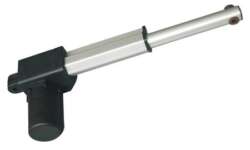Guide to Linear Servo Actuators

Servo actuators are used to create motion in specific ways – accurately, they provide motion based on the remote or automatic feedback which tells them when and where, and in which direction the movement is supposed to happen. This contrast with the conventional linear motion systems in that they only have one single input to direct their minimal working spheres. Using a servo actuator is something which gives the user a huge advantage when it comes to accuracy and delicacy, both of which are made possible by the controller, which is part of every servo, and which compares all the results with the intended results during every motion, so as to be able to correct the motion if there is any discrepancy between the two. Any differences will therefore be changed by the controller. These types of actuators are used in a number of different areas and different industries, meaning that servo actuators can appear in many different sizes and applications according to what they are needed for.







